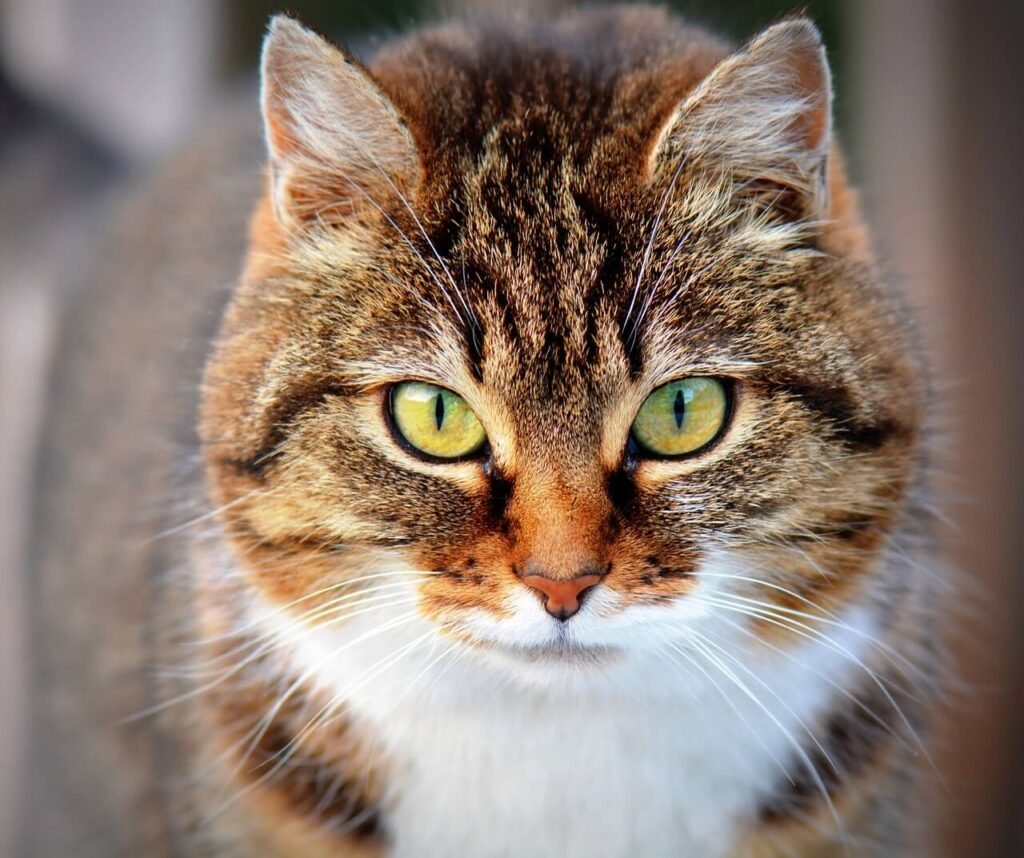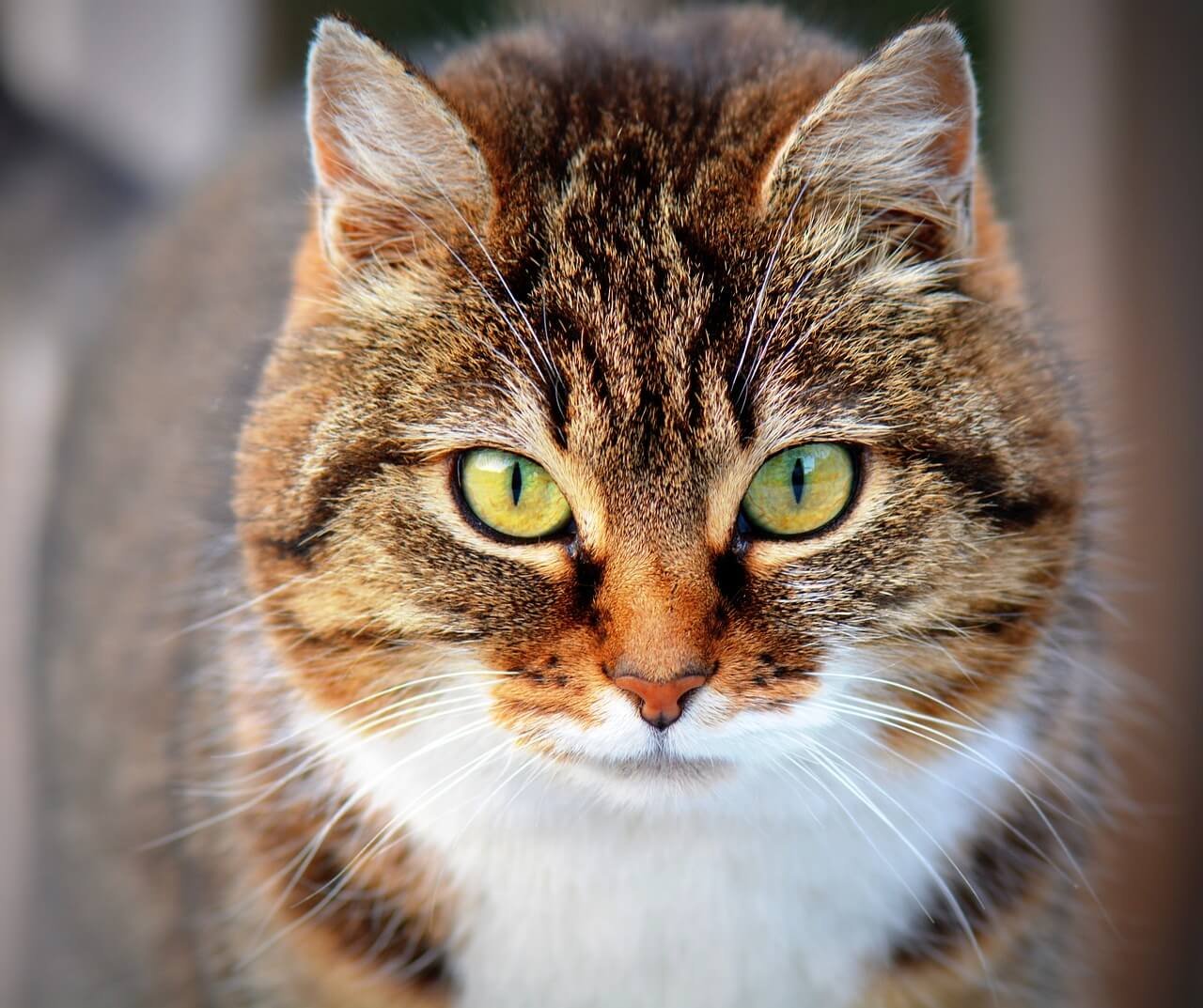How to Know If Your Cat Is Overweight: A Guide to Keeping Your Feline Fit
As a cat owner, ensuring your furry friend stays healthy and happy is a top priority. One common issue that can sneak up on even the most attentive pet parents is weight gain. But how do you know if your cat is overweight? Recognizing the signs early can help prevent serious health problems like diabetes, arthritis, or heart disease. By understanding what a healthy weight looks like for your cat and learning how to assess their body condition, you can take proactive steps to keep them in tip-top shape. In this guide, we’ll explore everything you need to know about identifying an overweight cat and maintaining their ideal weight.
What to Look For: Visual Clues That Your Cat May Be Overweight
The first step in determining whether your cat is overweight is observing their appearance. While some breeds naturally carry more weight than others, certain visual signs can indicate excess fat. Here’s what to watch for:
Rounded Belly :
A noticeable sagging or rounded belly can signal extra weight, especially if it sways while walking.No Visible Waistline :
From above, a healthy cat should have a slight tapering behind the ribs. If your cat’s body looks straight or bulges outward, they may be overweight.Fat Deposits Around the Tail Base :
Excess fat near the base of the tail creates a thickened or padded appearance.Difficulty Grooming Themselves :
Overweight cats often struggle to reach certain areas while grooming due to limited flexibility.Flattened Flanks :
Instead of a smooth curve, the sides of your cat’s body may appear flattened or overly full.
These visual cues are important indicators of your cat’s weight status. However, they should always be combined with other assessments for a complete picture.
Hands-On Approach: How to Feel for Extra Weight
In addition to visual observations, physically checking your cat’s body can provide valuable insights into their weight. Using your hands, you can feel for specific areas that reveal whether your cat is carrying too much fat.
Rib Check :
Gently press along your cat’s ribcage; you should be able to feel their ribs without excessive padding.Spine Sensation :
Run your fingers down their spine; it should be easy to locate without being overly prominent or buried under fat.Hip Bones Test :
The hip bones should be detectable but not jutting out sharply or completely hidden by fat.Neck Thickness :
A thicker neck than usual might indicate excess weight accumulation.Tail Base Fat Pad :
Squeeze gently around the base of the tail; a soft, doughy feeling suggests excess fat.
Performing these checks regularly helps you monitor your cat’s weight trends and catch any issues early. Remember, consistency is key!
Check this guide 👉How to Fatten Up a Cat: Best 7 Expert Tips!
Check this guide 👉Why Is My Cat So Skinny? Best 7 Health Tips!

Signs Your Cat Is Overweight | Signs Your Cat Is at a Healthy Weight |
|---|---|
Rounded or sagging belly | Defined waistline when viewed from above |
Difficulty grooming themselves | Ability to groom all parts of their body |
Fat deposits near the tail base | Tail base feels firm, not padded |
Ribs hard to feel through fat | Ribs can be felt with light pressure |
Flattened flanks or no tapering | Smooth curves with a visible taper |
Beyond Appearance: Behavioral Signs of an Overweight Cat
Sometimes, behavioral changes can hint at weight-related issues. Paying attention to shifts in your cat’s habits can offer additional clues about their overall health.
Lethargy or Reduced Activity :
Overweight cats often tire quickly and show less interest in playtime or exploration.Reluctance to Jump or Climb :
Difficulty jumping onto furniture or climbing stairs may indicate joint strain from excess weight.Increased Hunger Despite Weight Gain :
Some overweight cats develop insatiable appetites due to hormonal imbalances.Shortness of Breath After Minor Effort :
Panting or heavy breathing during simple activities can signal obesity-related stress.Sleeping More Than Usual :
While cats love napping, excessive sleep combined with weight gain could point to lethargy.
Behavioral signs often accompany physical ones, painting a clearer picture of your cat’s health. Addressing these behaviors promptly can improve their quality of life.
Taking Action: How to Help Your Cat Lose Weight Safely
If you suspect your cat is overweight, there are several steps you can take to help them shed those extra pounds safely. Always consult your veterinarian before making significant changes to your cat’s diet or routine.
Adjust Portion Sizes :
Measure food portions carefully to avoid overfeeding, even with high-quality diets.Switch to a Weight Management Diet :
Specialized formulas designed for weight loss can provide balanced nutrition.Limit Treats and Snacks :
Reduce the number of treats and opt for healthier alternatives like small pieces of cooked chicken.Encourage Daily Exercise :
Engage your cat with interactive toys, laser pointers, or feather wands to boost activity levels.Schedule Regular Vet Check-Ups :
Monitor your cat’s progress with professional guidance to ensure safe and effective weight loss.
With patience and consistency, these strategies can help your cat achieve and maintain a healthy weight. Celebrate small victories along the way!
The Hidden Dangers: Why Excess Weight Is Harmful to Cats
Carrying extra weight can lead to a host of health problems for your cat, many of which can significantly impact their quality of life. Understanding these risks underscores the importance of maintaining a healthy weight. Here are some common health issues associated with feline obesity:
Diabetes :
Overweight cats are at a higher risk of developing insulin resistance, leading to diabetes.Arthritis and Joint Pain :
Excess weight puts strain on joints, worsening arthritis or causing early onset of joint issues.Heart Disease :
Obesity increases the workload on the heart, potentially leading to cardiovascular problems.Respiratory Issues :
Extra fat around the chest can restrict breathing, especially during physical activity.Shortened Lifespan :
Studies show that overweight cats tend to live shorter lives compared to their healthy-weight counterparts.
These health risks highlight the importance of addressing weight issues early. A proactive approach can help your cat live a longer, healthier life.
Playtime with Purpose: How to Get Your Cat Moving
Exercise is crucial for helping your cat shed excess pounds, but it doesn’t have to feel like a chore—for you or your cat! Incorporating fun activities into your daily routine can make exercise enjoyable and effective. Here are some creative ways to encourage movement:
Interactive Laser Toys :
The unpredictable movements of a laser pointer can entice even the laziest cats to chase and pounce.Food Puzzle Toys :
These toys make your cat “work” for their food, providing both mental stimulation and physical activity.Climbing Structures :
Install cat trees or shelves to encourage jumping and climbing throughout the day.Feather Wands :
Mimic the motion of birds or insects to spark your cat’s natural hunting instincts.Daily Play Sessions :
Dedicate 10–15 minutes twice a day to structured playtime, ensuring consistency.
By making exercise fun and engaging, you can help your cat burn calories while strengthening your bond. Every little bit of movement counts!
Smart Feeding: How to Modify Your Cat’s Diet for Weight Management
A balanced diet is essential for any weight loss plan, and cats require specific nutritional needs to stay healthy. Making thoughtful adjustments to their meals can support gradual and safe weight loss. Here are some dietary tips to consider:
High-Protein, Low-Carb Foods :
Protein-rich diets promote muscle maintenance while minimizing fat storage.Controlled Calorie Intake :
Use portion control to ensure your cat consumes fewer calories than they burn.Wet Food Over Dry Food :
Wet food often contains more water and protein, helping your cat feel fuller longer.Scheduled Feeding Times :
Replace free-feeding with set meal times to regulate intake and prevent overeating.Hydration Matters :
Ensure your cat has constant access to fresh water, as dehydration can mimic hunger cues.
These dietary changes, combined with regular exercise, can create a sustainable path to weight loss. Always consult your vet before making significant modifications to ensure your cat’s unique needs are met.
Frequently Asked Questions About Overweight Cats
How can I tell if my cat is overweight without weighing them?
Use visual and tactile assessments, such as checking for a waistline and feeling their ribs.
Can spaying or neutering cause weight gain in cats?
Yes, hormonal changes after surgery can slow metabolism, requiring dietary adjustments.
Is it dangerous for my cat to lose weight too quickly?
Yes, rapid weight loss can lead to liver issues; aim for gradual, steady progress instead.
What type of exercise is best for overweight cats?
Interactive play sessions using toys that mimic prey movements are highly effective.
Should I put my cat on a diet without consulting a vet?
No, sudden dietary changes can harm your cat; always seek veterinary advice first.
Final Thoughts: Prioritizing Your Cat’s Health and Happiness
Understanding how to know if your cat is overweight empowers you to take charge of their well-being. Whether it’s monitoring their body condition, adjusting their diet, or encouraging more playtime, every effort contributes to a longer, healthier life for your feline companion. Remember, weight management isn’t just about aesthetics—it’s about ensuring your cat remains active, pain-free, and joyful. With love, patience, and a little guidance, you can help your cat maintain their ideal weight and enjoy countless happy years together. After all, a healthy cat is a happy cat—and that’s something worth striving for!
Cat Fever Treatment: Best 7 Expert Tips! Discover expert advice on identifying, managing, and treating fever in cats to ensure their quick recovery and well-being.
Understanding Meloxicam for Cats: Best 7 Expert Tips! Learn how to safely administer meloxicam, manage side effects, and ensure your cat's comfort with expert advice on feline pain relief.
Amoxicillin for Cat UTI: Best 7 Expert Tips! Discover safe usage, dosage guidelines, and expert advice on treating feline urinary tract infections effectively with amoxicillin.
Understanding Cat Cancer Treatment: Best 7 Expert Tips! Discover expert advice on managing feline cancer, from early detection to treatment options, ensuring your cat’s health and comfort.





